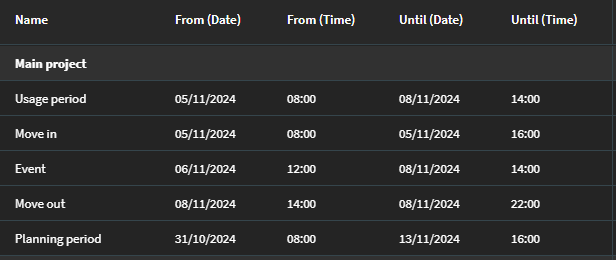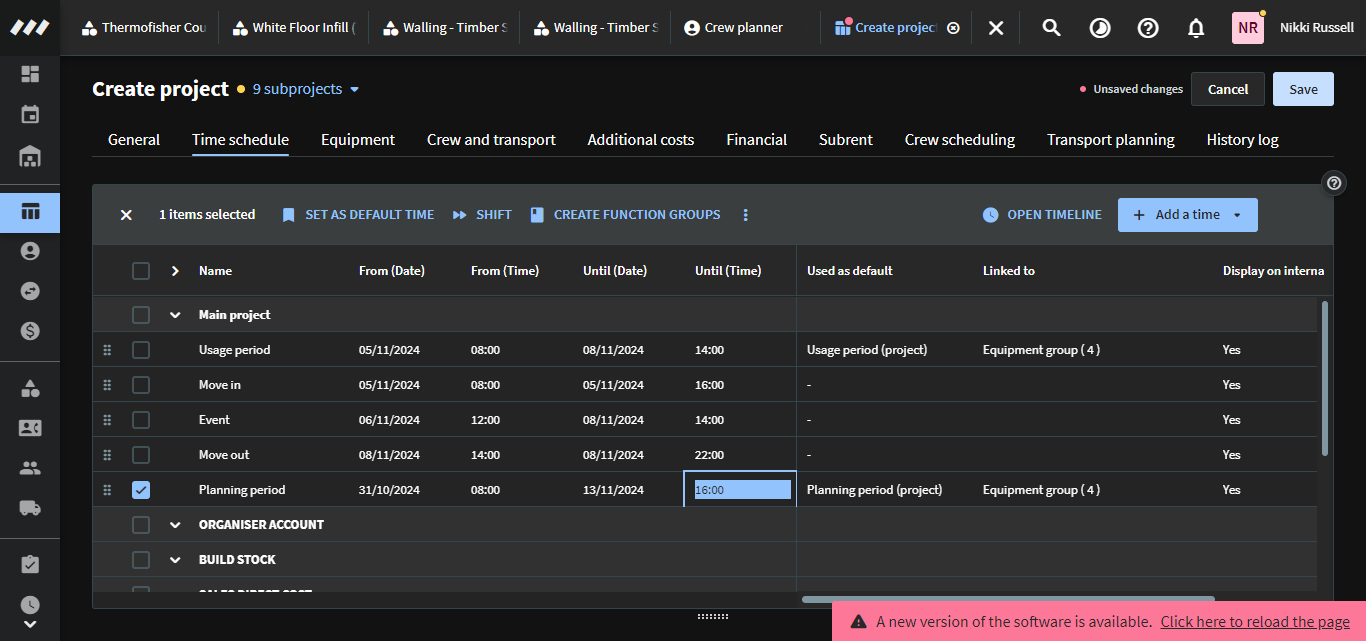How to Add a New Project
Learn how to add a new project with our comprehensive guide. Follow these steps to create, manage, and organize your projects efficiently.
In this guide, we'll learn how to add a new project using the Projects feature. We'll start by navigating to the home page for projects and locating the button to add a new project. We'll select a regular project type and choose a template for an exhibition organizer. After naming the project, we'll include client details, location, and time schedule. We'll also set the planning period based on the usage period. Finally, we'll double check all entries and so a final save on the project.Rentman.
Let's get started
This guide will show you how to add a new project. Here is our home page for projects.
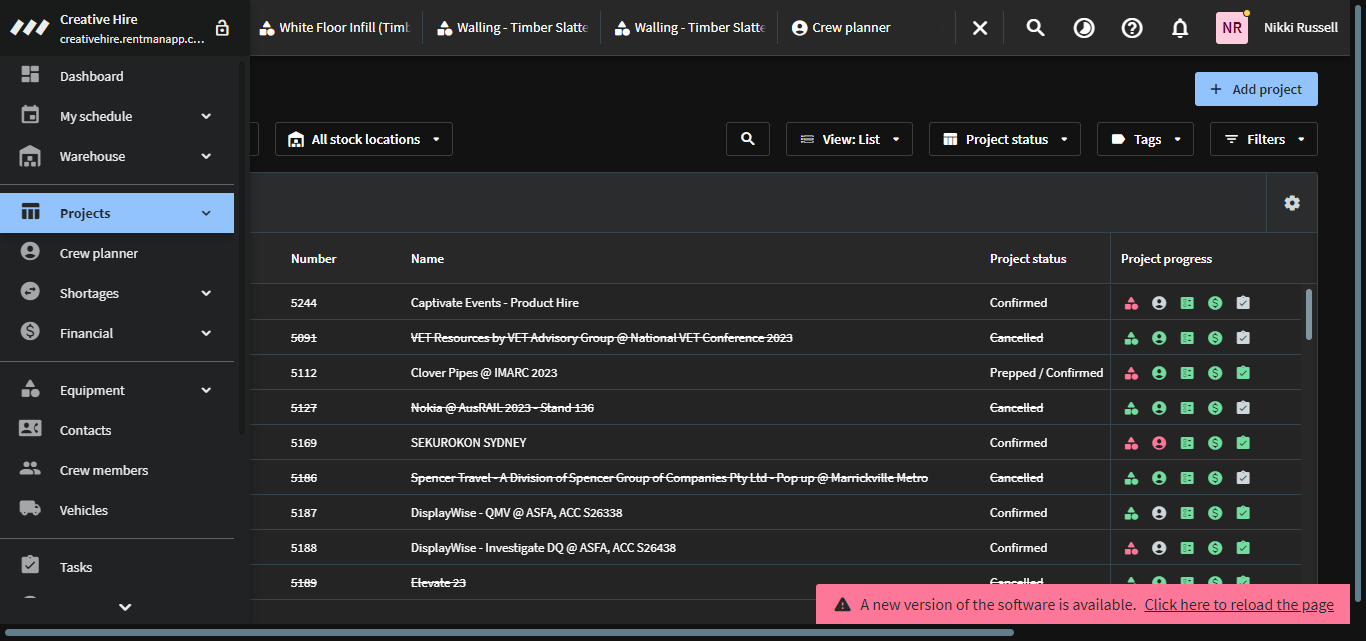
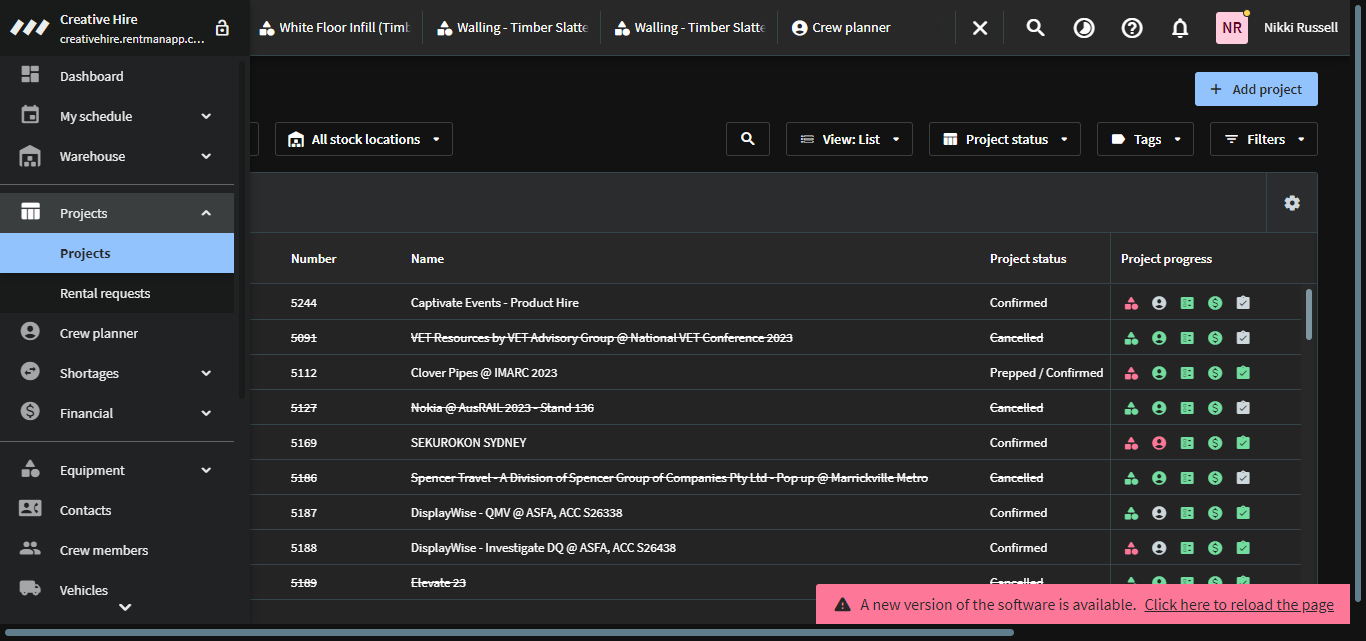
When creating a new project, in the top right corner you'll see this blue section here, click the button, and add a project.
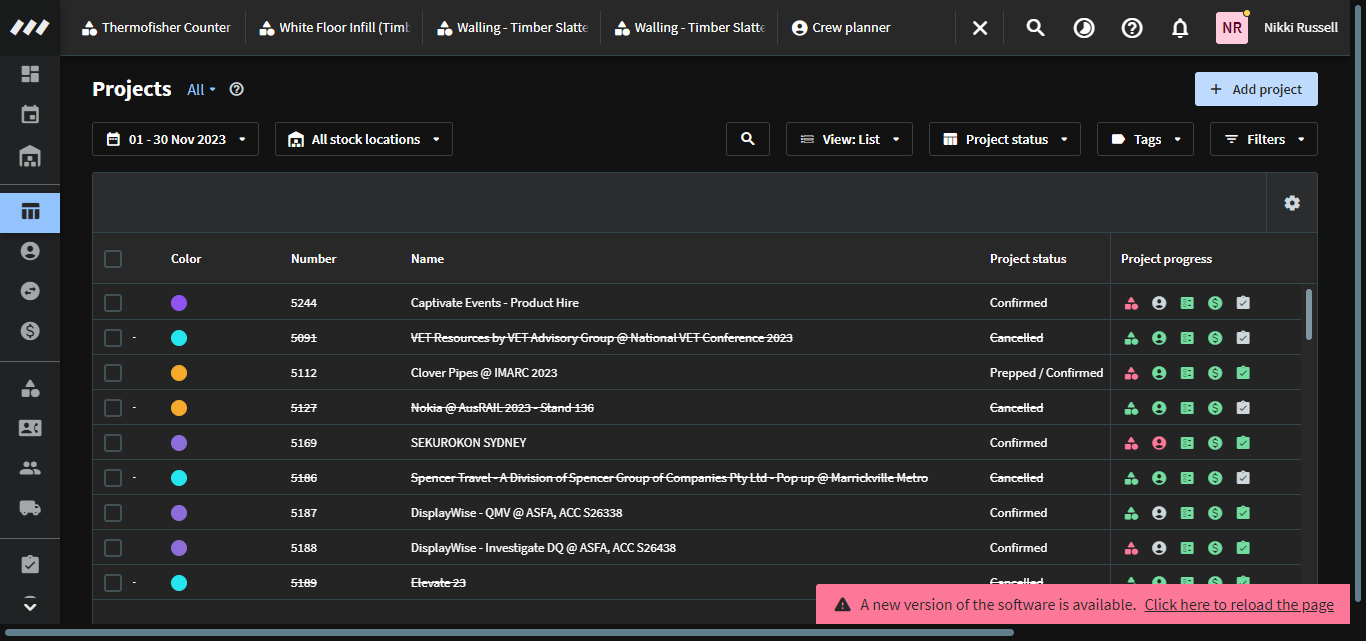
The project type will always be a regular project.
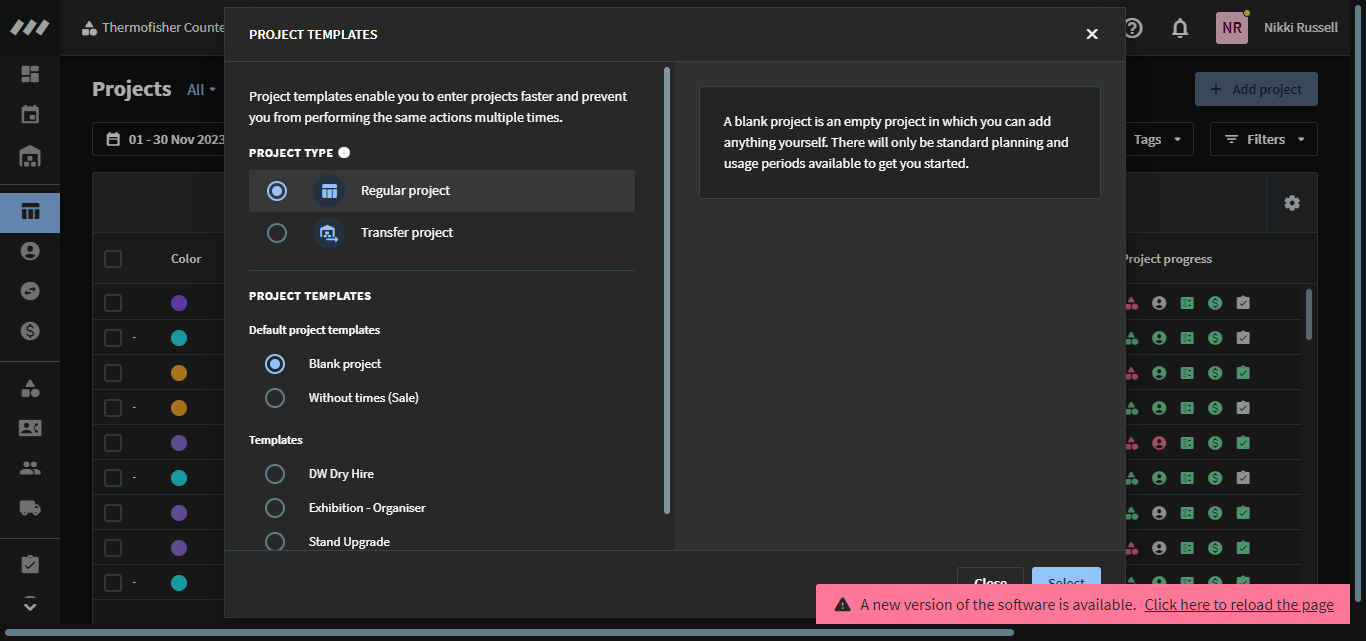
Next, we will select from our project templates and choose the one for our exhibition organiser.
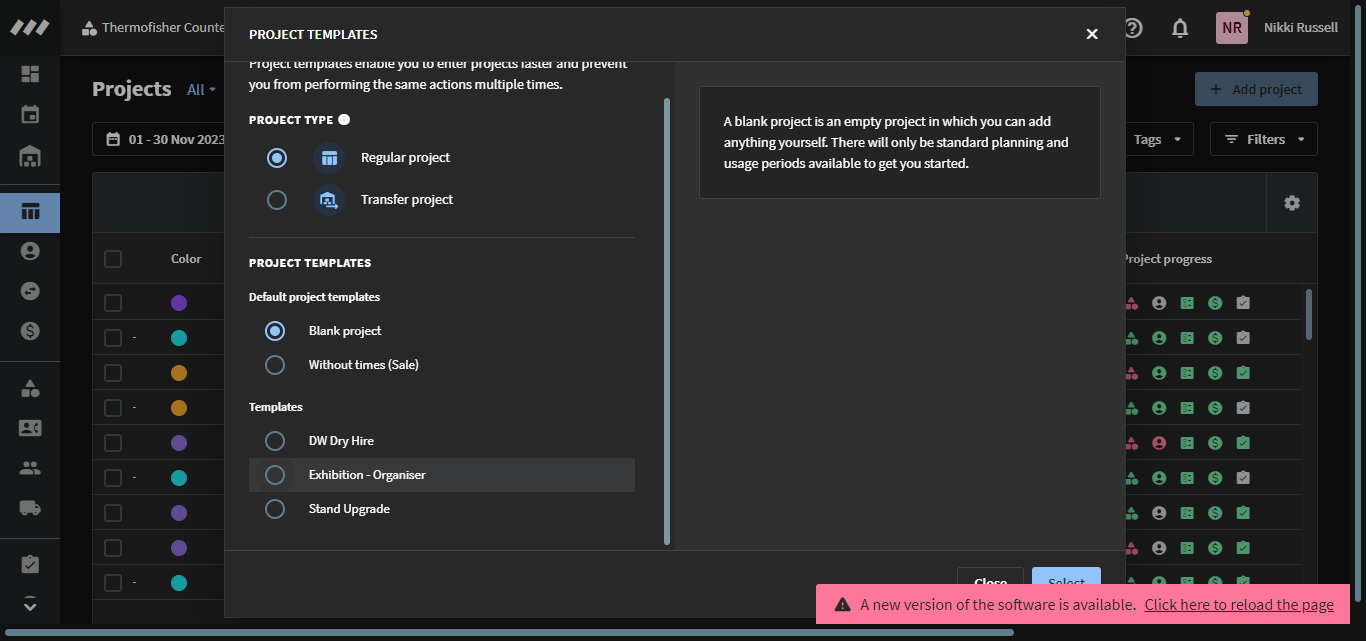
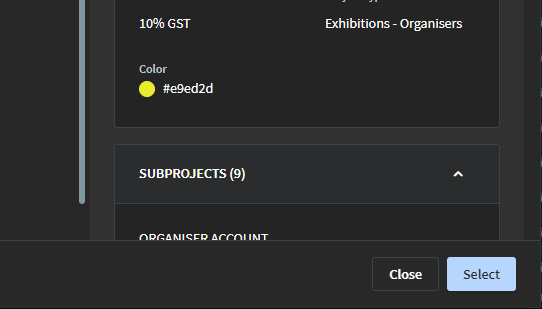
Once your project is open, we will begin by changing the project name.
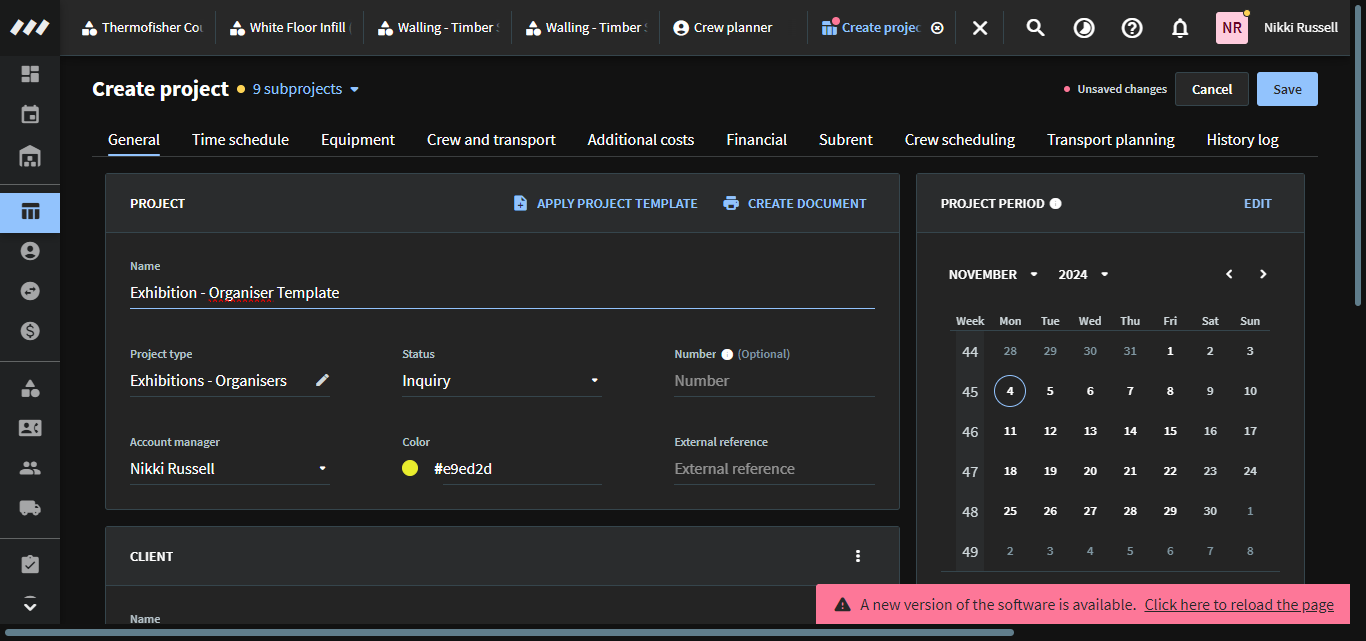
For example, we will name this the "Project Testing Guide." Once you have your name, there are sections that are automatically generated for you, so you won't need to change those (Project type, Number, Account Manager).
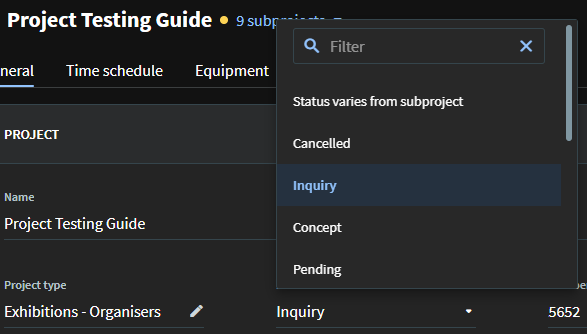
Our next step is to include our client.
Start typing your client name (this will be the company name), if your client already exists in Rentman, you will be able to select them from the drop down menu.
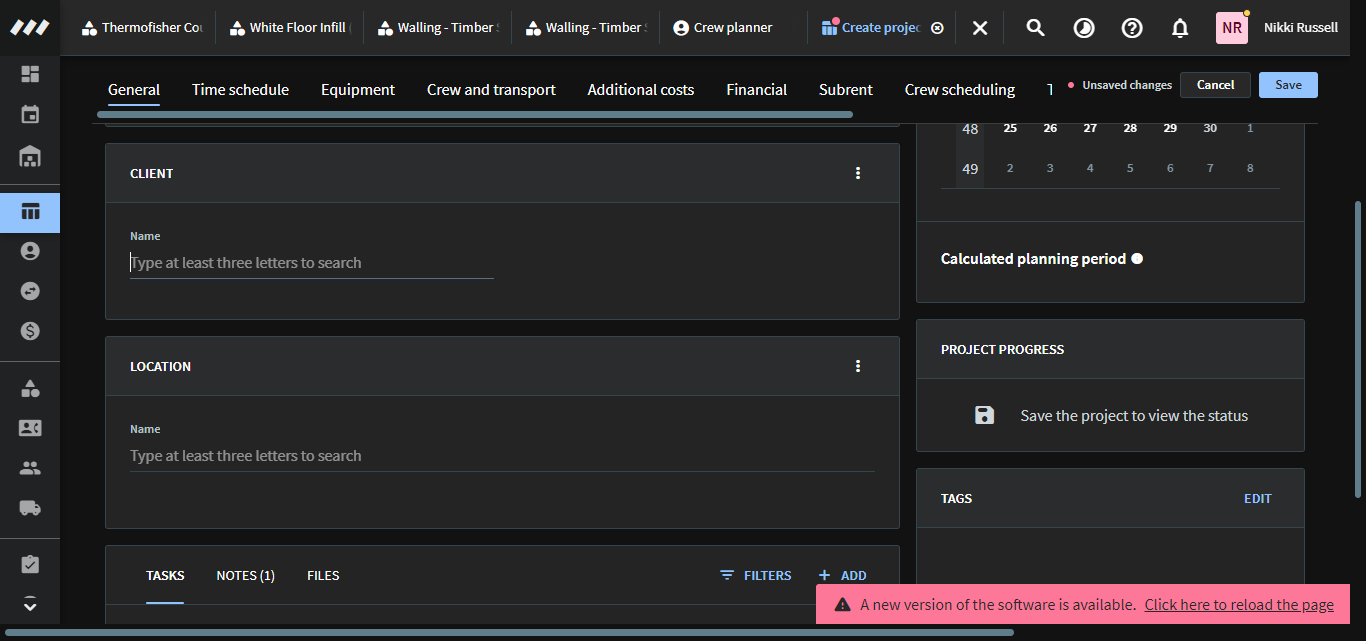

Now, there may be a pop up window asking to copy the data for the client information, click copy to proceed.
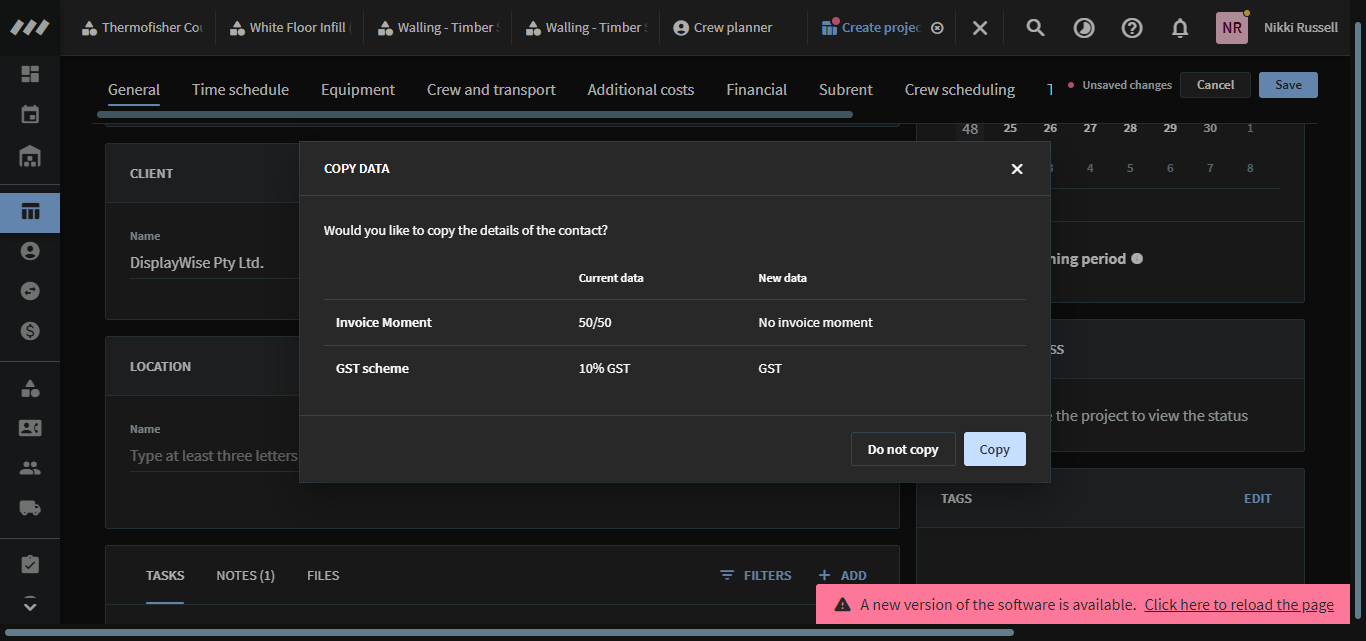
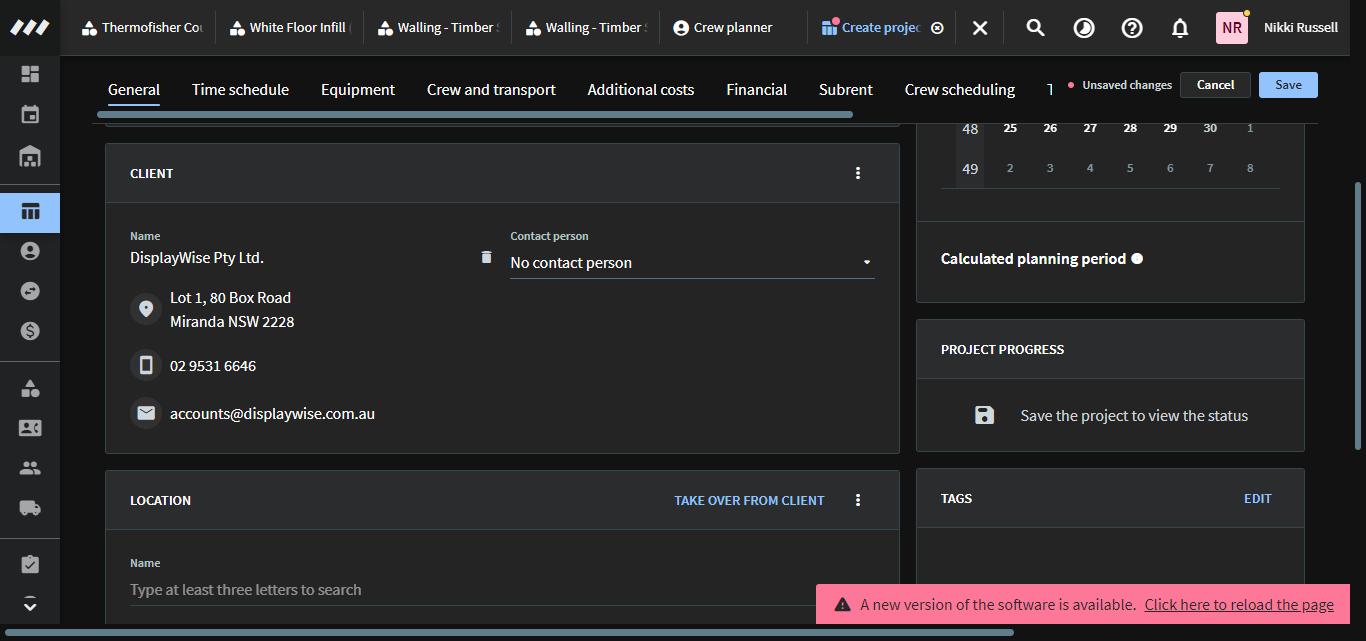
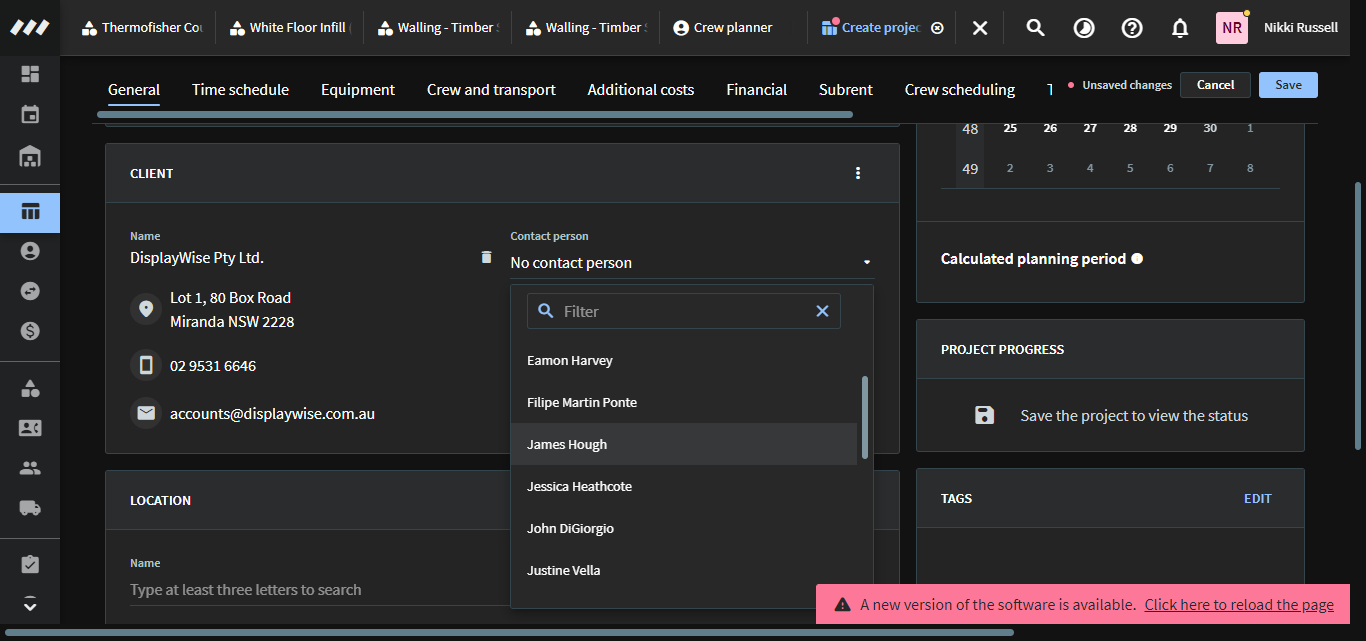
Next, enter the location where the event will be held.
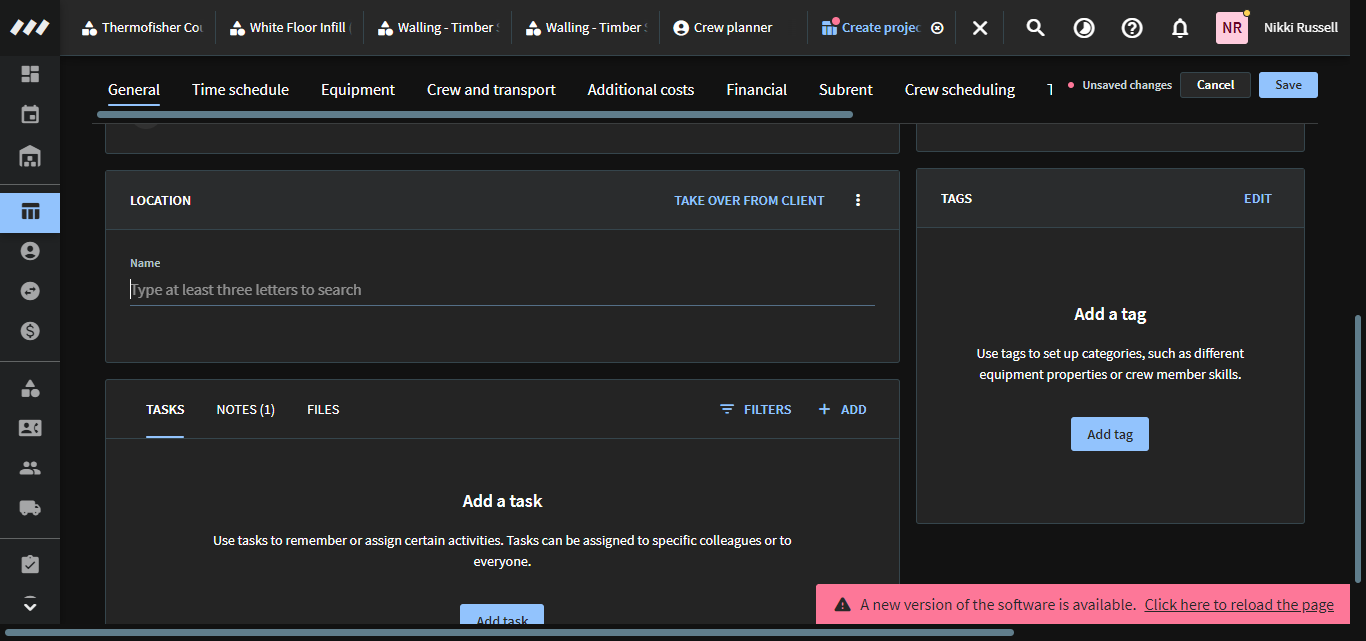
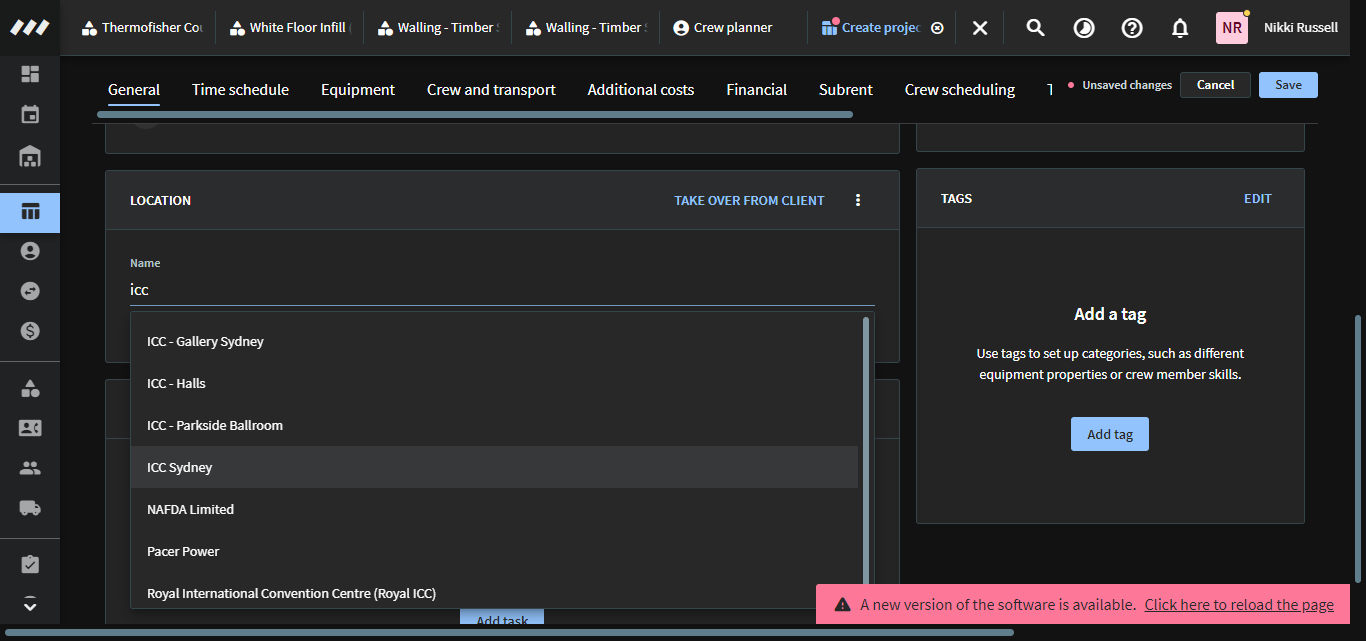
If you have a direct venue contact you are working with, please also select their name.
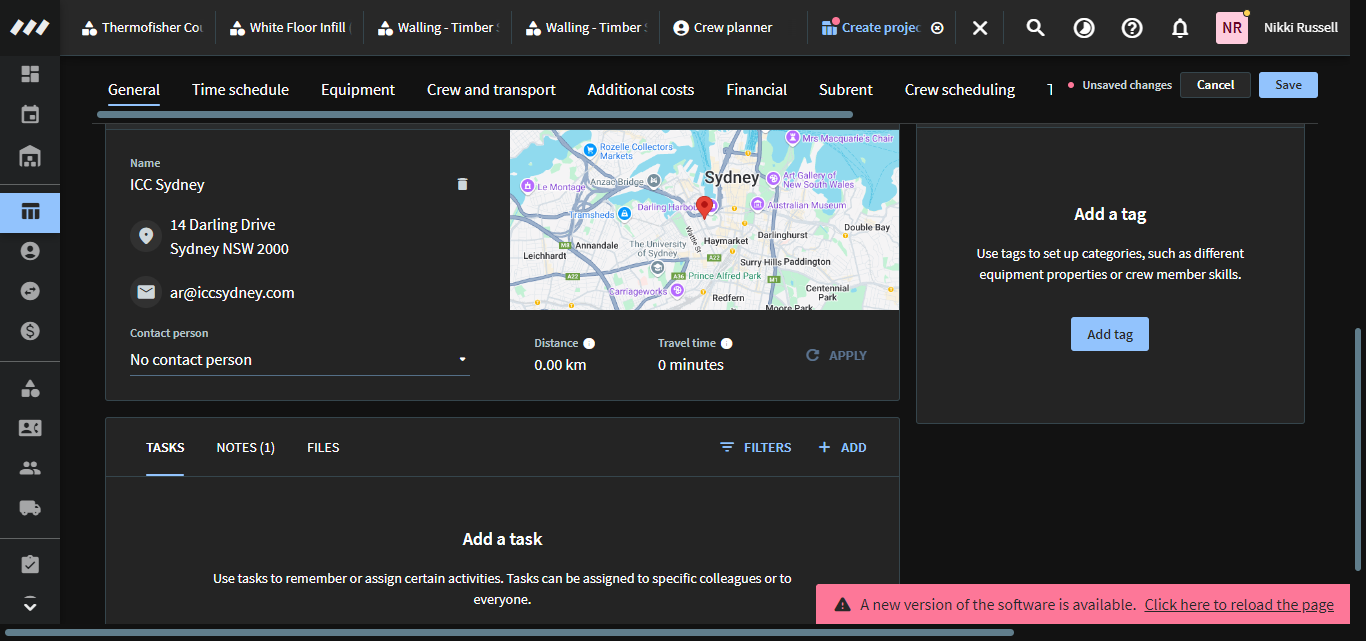
Our next step is to include the time period the project will be running.
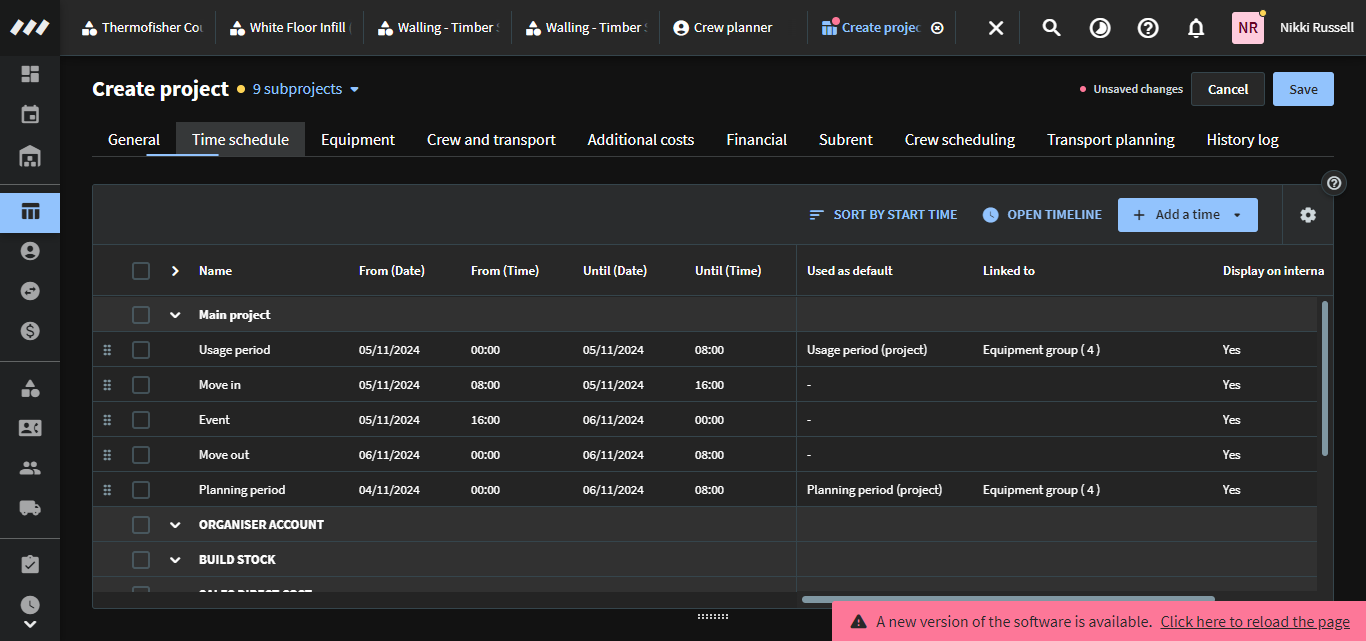
We will look at breaking down the time schedule definitions.
Usage period
Our usage period is from move-in (bump-in) until move-out (bump-out) (MIMO).
For our test project, the usage period is from the 5th of November to the 8th of November.
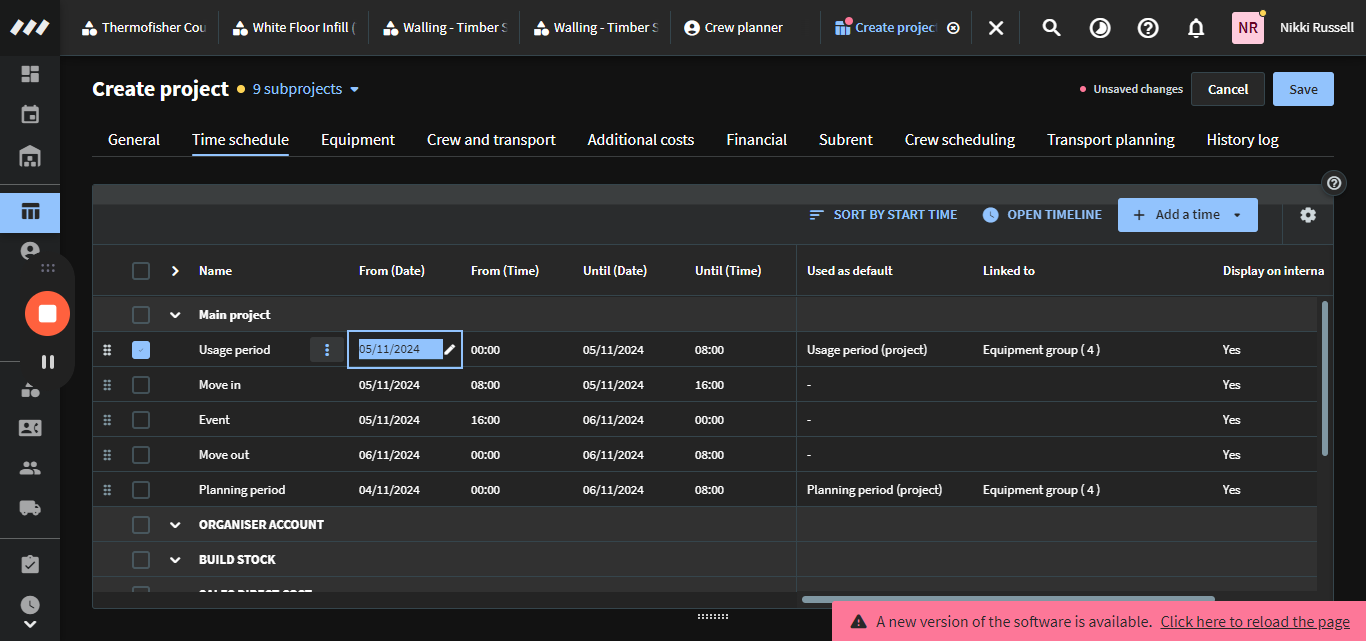
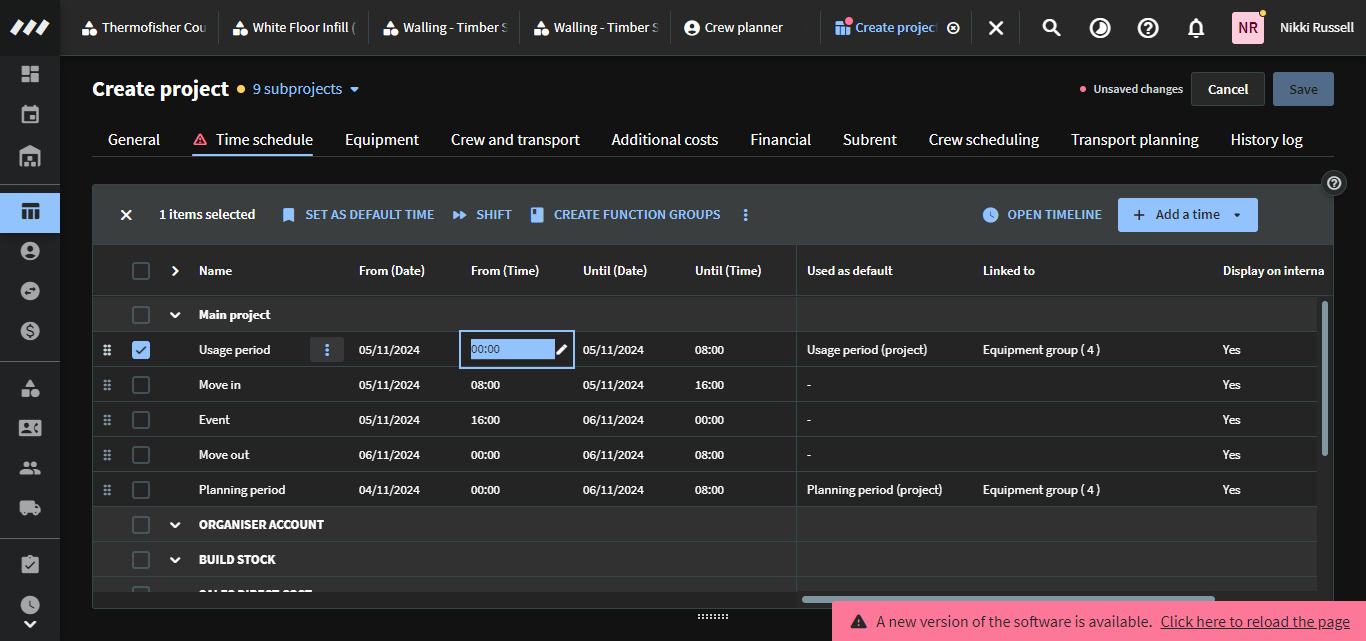
Move In
Our move in time is when the operations team first has access to venue for set up.
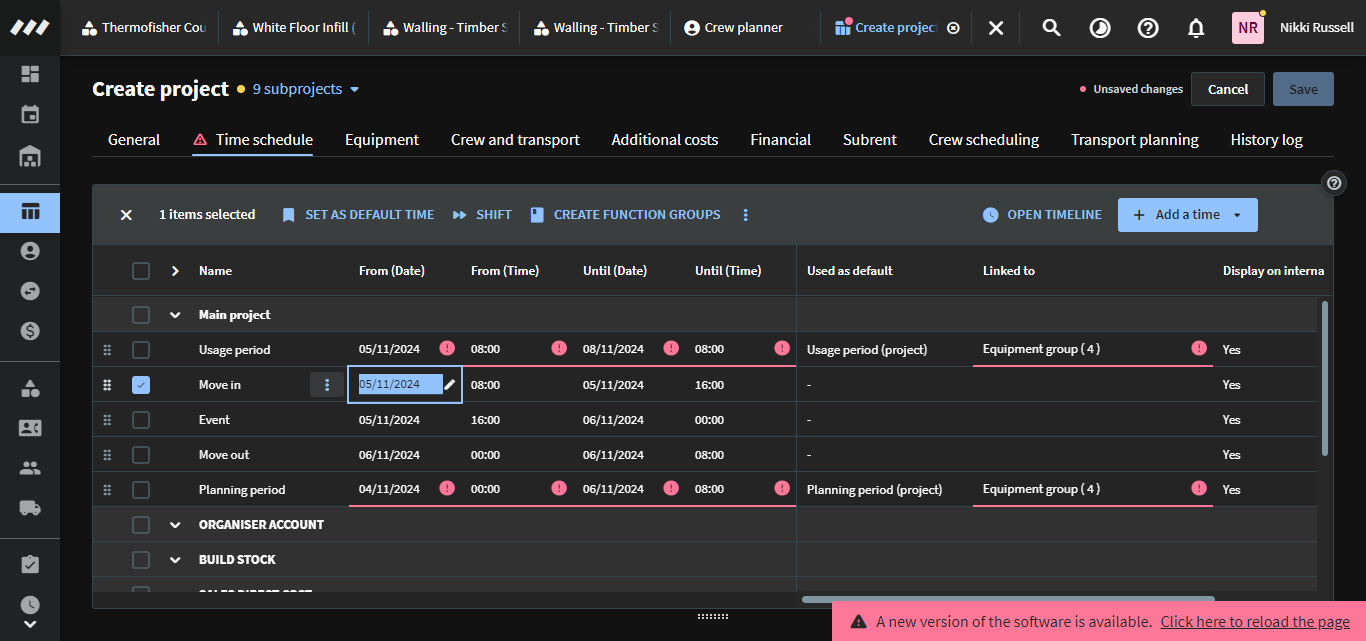
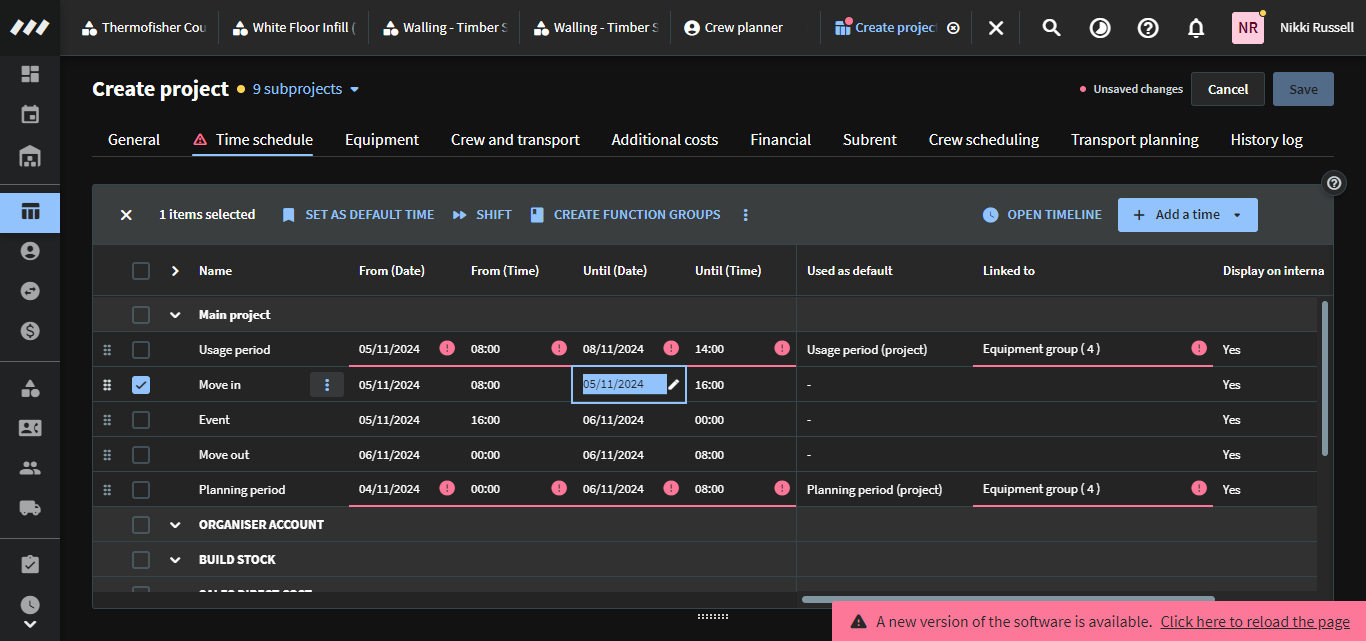
Event
Our event time is period when show will open until show will close. (this generally follows closely to the end of move in time)
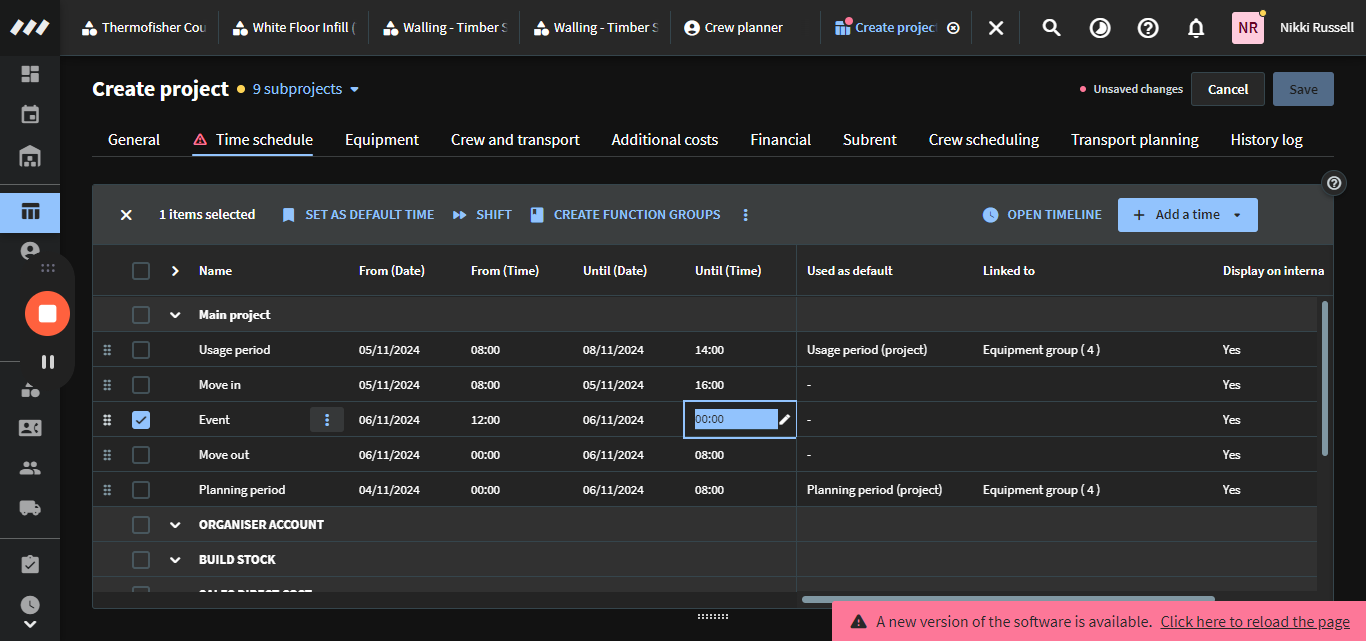
Move Out
Our move out time is when the operations team first has access to venue for pack down.
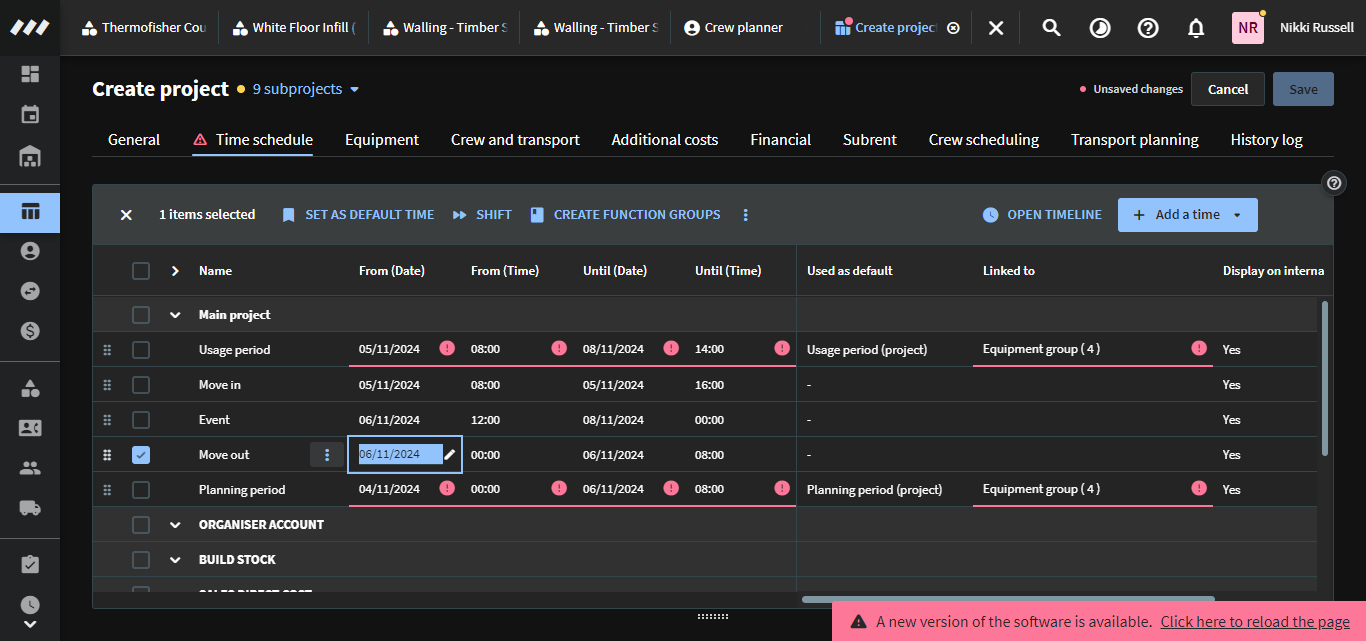
Planning Period
Our planning period has 2 formulas.
Events based in Sydney
From = 3 working days before move in.
Until = 3 working days after move out.
Events based interstate (VIC/QLD)
From = 5 working days before move in.
Until = 5 working days after move out.
Best to use 0800hrs (from) and 1600hrs (until) to ensure it looks booked for the work day.
